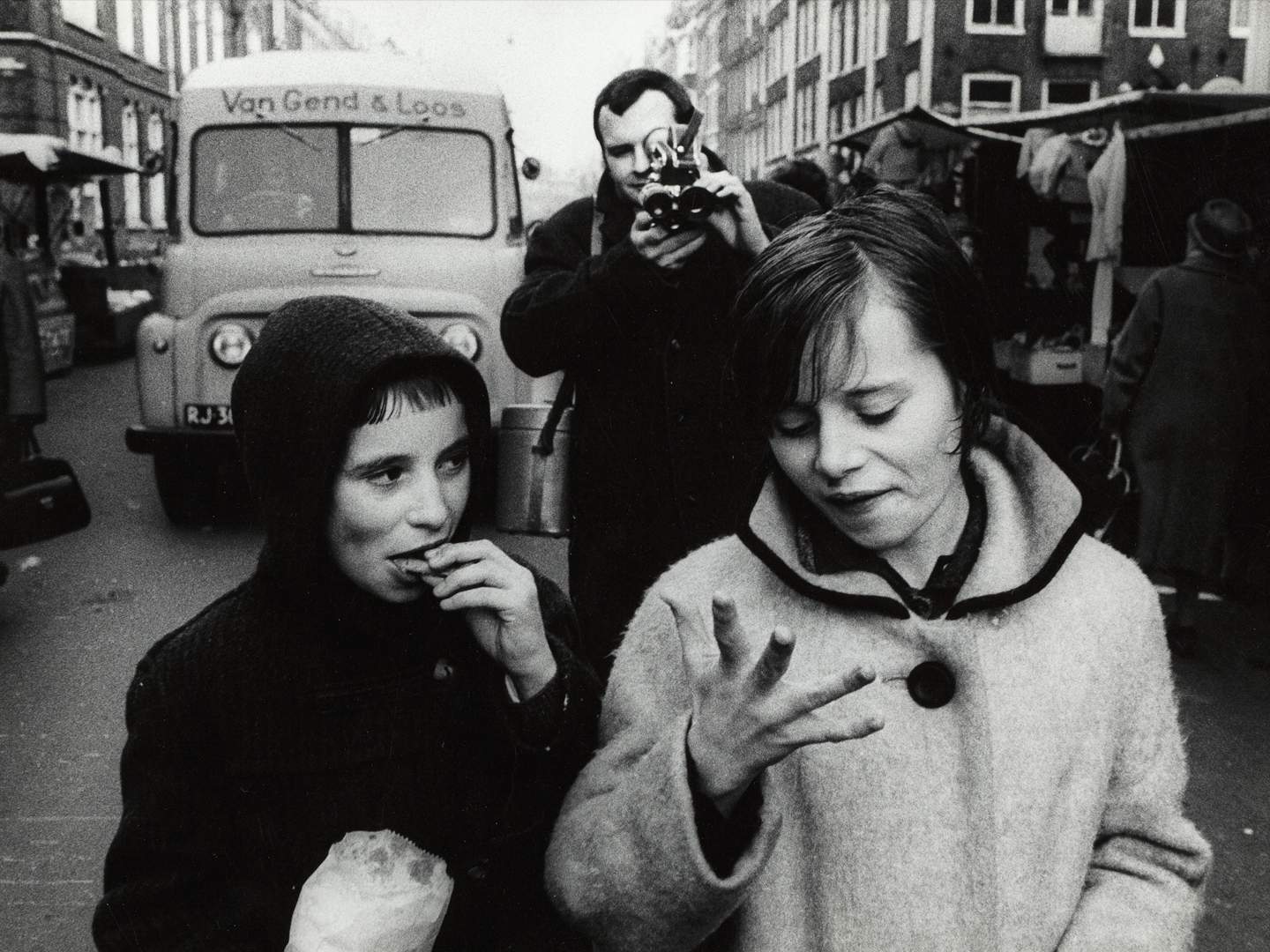
The Dutch filmmaker, photographer, and author Johan van der Keuken (1938-2001) started out in photography as early as his teenage years. His first photo books appeared in the 1950s: Wij zijn 17 [We Are 17] and later Achter glas [Behind Glass]. At the age of eighteen, Van der Keuken entered the Paris film school IDHEC, where, in spite of the “systematic” education, he discovered a growing passion for filmmaking. This period marks his departure from photography.
This retrospective bears the title Seeing, Looking, Filming [Zien, kijken, filmen] after the 1980 book of the same name, a collection of Van der Keuken’s texts on filmmaking. Not coincidentally, it is these three verbs that in their interconnectedness best define Van der Keuken’s film practice. Seeing is a form of observation, an interest in the world. Looking is an action, you choose where to look and where to place your focus. And filmmaking in turn is a combination and culmination of the two. Van der Keuken, who playfully conceived of the camera as an extension of his body, opposed the idea that filmmakers stand outside the world they try to depict. The filmmaker stands radically in the world, looking through their lens, framing reality. He always kept one eye on the surrounding world while the other peered through the camera’s viewfinder. Van der Keuken’s oeuvre originates from the adventure of that gaze. Together with his wife, Nosh van der Lely, who operated the microphone and recorder, he traveled the world.
A fourth verb in the title could have been editing. A documentary filmmaker, according to Van der Keuken, can never pretend to represent reality. “For me, the material side of film comes first: a beam of light on a screen. And what is transmitted in that bombardment of light on a screen is always fiction.” In other words, films, including documentary films, are always constructed and edited. Van der Keuken also described his collagist editing strategy as cubist. Editing should offer not one point of view but a multitude of perspectives in which our reality could possibly be described.
In October and November, Sabzian and CINEMATEK will present the first part of this full retrospective, which will be shown chronologically. This first part comprises Van der Keuken’s early work, his first attempts at developing his own visual language: city portraits of Amsterdam and Paris, his famous portraits of artist friends and notable people from his environment in Amsterdam, a first film about the Dutch poet Bert Schierbeek, and finally the films that originate out of a social concern. His famous short films about blind children also date from this period. Together with Remco Campert, Van der Keuken also experimented early on with more traditional forms of fiction, in which his particular attention to frame and composition is particularly striking. You can find the dates for the individual screenings and programs here.
The second part of the retrospective, starting in December, will feature his more extensive works, including the outstanding North-South trilogy, the colossal Amsterdam Global Village (1996), and his final film De grote vakantie [The Long Holiday] (2000).
Van der Keuken was also a gifted writer about cinema, an activity through which he sought to shape and delineate his practice. “For me, writing was sometimes necessary because something lived inside me, hovering before my eyes, that I wanted to grasp – with hermetic formulas or intuitive stammering, speculative outpourings or strict prescriptions to the world.” Sabzian will publish a wide selection of his writings during the retrospective.1 2
Gerard-Jan Claes, Nina de Vroome, and Tillo Huygelen
For information on the subtitles accompanying the films, be sure to check the CINEMATEK website.
- 1With the support of Algemeen-Nederlands Verbond / Stichting ANV Fondsen, KULeuven – Commissie actuele kunst and Cinergie.be.
- 2Photo: Johan van der Keuken shooting Beppie (1965) – © Eddy Posthuma de Boer

